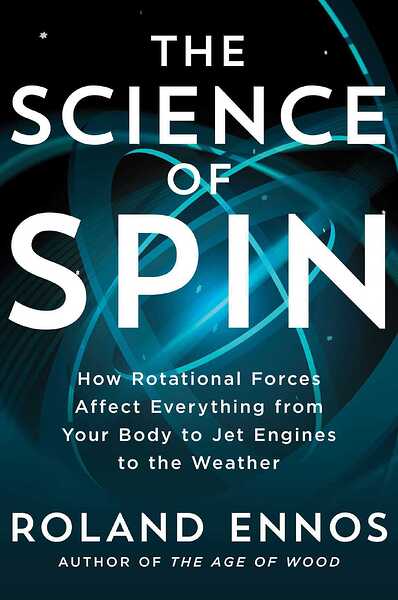Looking for a good read? Here is a recommendation. I have an unusual approach to reviewing books. I review books I feel merit a review. Each review is an opportunity to recommend a book. If I do not think a book is worth reading, I find another book to review. You do not have to agree with everything every author has written (I do not), but the fiction I review is entertaining (and often thought-provoking) and the non-fiction contain ideas worth reading.
Book Review
Putting a Spin on Things
Reviewed by Mark Lardas
August 27, 2023
“The Science of Spin: How Rotational Forces Affect Everything from Your Body to Jet Engines to the Weather,” by Roland Ennos, Scribner, 2023, 288 pages, $28.00 (hardcover) $14.99 (ebook), $14.88 (audiobook)
Spin: it is not just for politicians anymore. It dominates all aspects of our lives.
“The Science of Spin: How Rotational Forces Affect Everything from Your Body to Jet Engines to the Weather,” by Roland Ennos makes this clear. He shows how rotation affects everything, from the way you move to the existence of the Universe.
Ennos starts with a prologue exploring the difficulties created by spin, including our difficulty in understanding it. He then splits the book into three main parts: how spin affects our world and the universe, how technology uses it, and how it affects the human body. He then wraps things up by putting spin into perspective, its impact and how to teach and explore spin.
In the first section he shows the role rotation plays in our physical world, including its creation. When God created the heavens and the Earth, he used spin to do so. Spin effects continued after the creation of our Solar System. Ennos provides chapters showing how it affects the Earth’s magnetic field, the weather, tides, and virtually every aspect of the world we live in.
He goes on to explore spin in technology. He starts with the humble whorl, a weighted stone used to make thread, one of our earliest tools. He explores the role rotation plays in increasingly sophisticated technology, right down to today’s turbine engines. The wheel, watermills, lathes, pumps, all get a look. It is a fast trip from the Stone Age to the Space Age.
Next, Ennos looks at the role rotation plays in our bodies. Rotation rules how humans move. He starts by showing how simply standing relies on bodily rotation. He then goes on to explore the role it plays in walking, running, throwing, and hitting. It turns out all of these are the functions of surprisingly complicated combinations of rotation.
The best part? Ennos explains everything without using mathematics. The book has no equations. He avoids them believing they do little to explain what happens, even to the mathematically capable. He even argues mathematics hindered our understanding of rotation. Scientists got lost in a welter of equations, sometimes missing obvious explanations. Instead Ennos relies on physical explanations for the phenomena created by spin.
“The Science of Spin” is a delightful book, equally entertaining and enlightening. Read it and you will come away with a better understanding of our world and how it works.
Mark Lardas, an engineer, freelance writer, historian, and model-maker, lives in League City. His website is marklardas.com.
